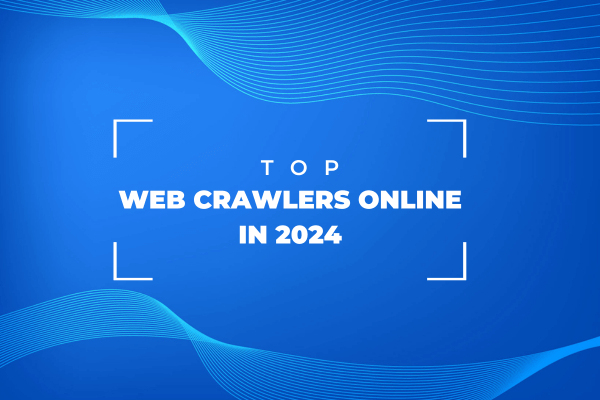
The Digital Exploration Revolution: Understanding Web Crawlers
In the vast, intricate landscape of digital information, web crawlers emerge as sophisticated explorers, navigating the complex terrain of online data with remarkable precision and intelligence. These technological marvels are far more than simple indexing tools; they represent the cutting edge of digital intelligence, transforming raw internet content into structured, actionable insights.
The Evolution of Digital Navigation
Web crawlers have undergone a remarkable transformation since their inception. What began as rudimentary search engine bots has evolved into complex, intelligent systems capable of understanding, interpreting, and extracting nuanced information from the most intricate web environments.
Technical Architecture: The Heart of Web Crawling
Decoding the Crawler‘s Mechanism
At its core, a web crawler operates through a sophisticated combination of algorithmic intelligence and network traversal techniques. Imagine a digital explorer systematically moving through interconnected web pages, following hyperlinks, analyzing content, and creating a comprehensive map of online information.
The technical architecture of modern web crawlers involves multiple intricate components:
Intelligent Routing Algorithms
Modern crawlers utilize advanced routing mechanisms that go beyond simple link following. These algorithms consider factors like page relevance, update frequency, and network topology to optimize traversal strategies.Distributed Computing Infrastructure
Contemporary web crawlers leverage distributed computing frameworks, enabling parallel processing and scalable data extraction. This approach allows crawlers to handle millions of web pages simultaneously, dramatically increasing efficiency and coverage.Machine Learning Integration
Artificial intelligence has revolutionized web crawling. Machine learning models now enable crawlers to:
- Predict potentially relevant content
- Adapt extraction strategies dynamically
- Recognize complex content patterns
- Optimize resource allocation
Performance Optimization Techniques
Web crawlers must balance comprehensive coverage with computational efficiency. Advanced techniques like adaptive request scheduling, intelligent caching, and bandwidth management ensure optimal performance across diverse network conditions.
Top Web Crawler Tools: Comprehensive 2025 Landscape
Octoparse: Democratizing Data Extraction
Octoparse represents a paradigm shift in web crawling technology, offering a no-code solution that empowers users across technical skill levels. Its visual interface transforms complex data extraction into an intuitive, accessible process.
Key Features:
- AI-powered extraction algorithms
- Dynamic website handling capabilities
- Multi-platform data export
- Intelligent scheduling mechanisms
Pricing Ecosystem:
- Free Tier: Fundamental extraction capabilities
- Standard Plan: Comprehensive team-oriented features
- Professional Tier: Enterprise-grade functionality
Screaming Frog SEO Spider: Technical Infrastructure Analysis
Specializing in technical SEO diagnostics, Screaming Frog provides granular insights into website performance and structural integrity. Its comprehensive crawling capabilities enable detailed analysis of complex digital ecosystems.
Unique Capabilities:
- Comprehensive website infrastructure mapping
- Detailed SEO performance diagnostics
- Intelligent reporting mechanisms
- Adaptive crawling strategies
Ahrefs: Digital Intelligence Platform
Ahrefs transcends traditional crawling, offering a holistic digital intelligence platform. By indexing over 15 billion web pages, it provides unprecedented insights into online content landscapes.
Advanced Features:
- Sophisticated backlink analysis
- Competitive intelligence gathering
- Integrated SEO research tools
- Predictive content mapping
Emerging Technological Frontiers
Artificial Intelligence and Web Crawling
The convergence of artificial intelligence and web crawling represents a transformative technological frontier. Machine learning models are revolutionizing data extraction through:
- Predictive content recognition
- Adaptive extraction algorithms
- Intelligent pattern identification
- Automated data normalization
Ethical Considerations in Digital Exploration
As web crawlers become increasingly sophisticated, ethical considerations become paramount. Responsible crawling practices must balance technological capabilities with:
- Strict privacy protections
- Transparent data collection methodologies
- Compliance with international regulations
- Respect for website ownership rights
Implementation Best Practices
Successful web crawling requires a strategic approach that combines technical expertise with ethical considerations:
Define Clear Extraction Objectives
Establish precise goals and parameters for your crawling initiatives, ensuring focused and efficient data collection.Implement Robust Error Handling
Develop comprehensive error management strategies to handle network disruptions, content variations, and unexpected crawling challenges.Leverage Distributed Computing
Utilize scalable computing infrastructures to optimize crawling performance and coverage.Maintain Continuous Algorithm Evolution
Regularly update and refine crawling algorithms to adapt to changing web technologies and content structures.
Future Outlook: Web Crawling 2025-2030
The future of web crawling is intrinsically linked to broader technological advancements. Anticipated developments include:
- Enhanced machine learning integration
- More sophisticated AI-driven extraction
- Improved computational efficiency
- Advanced privacy and compliance frameworks
Conclusion: Navigating the Digital Information Ecosystem
Web crawlers represent more than technological tools—they are sophisticated digital explorers transforming raw internet data into strategic intelligence. As our digital landscape becomes increasingly complex, mastering web crawling technologies becomes crucial for businesses, researchers, and technology professionals.
The journey of web crawling is an ongoing exploration, continuously pushing the boundaries of what‘s possible in digital information extraction and analysis.










